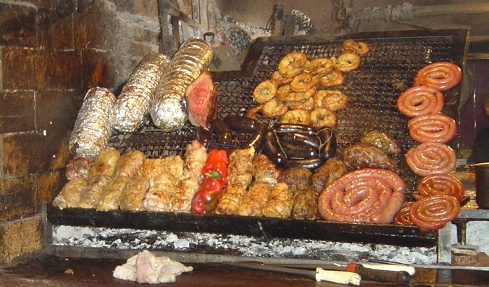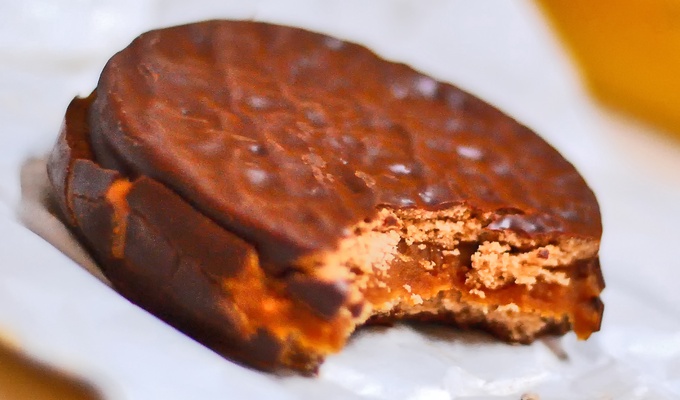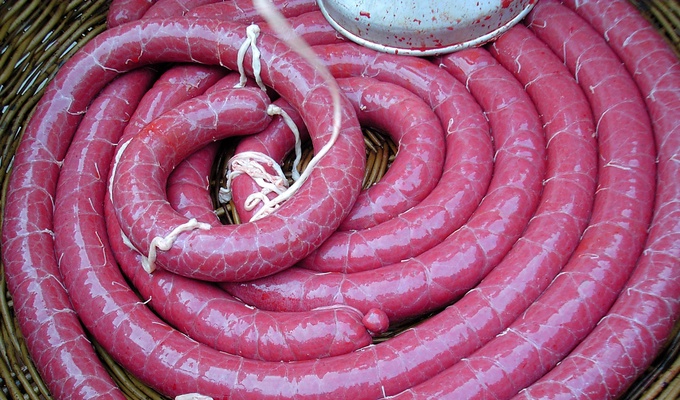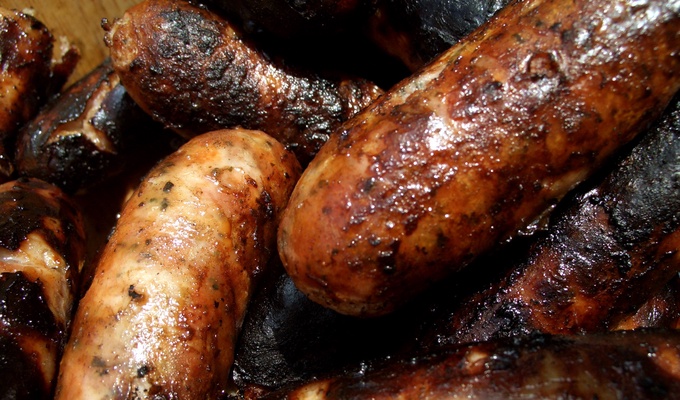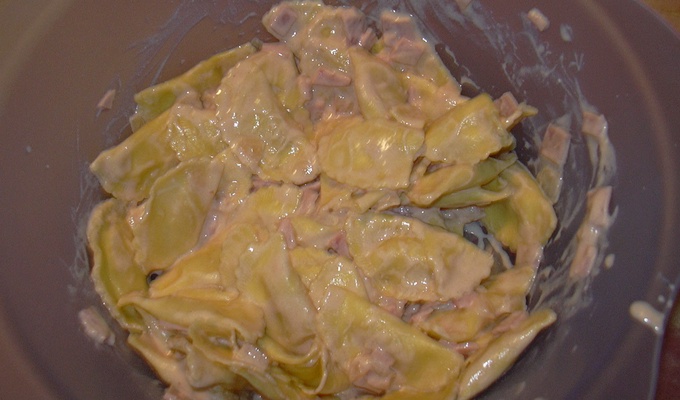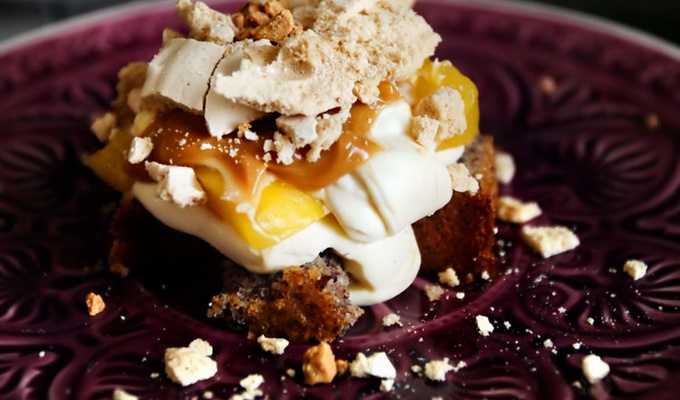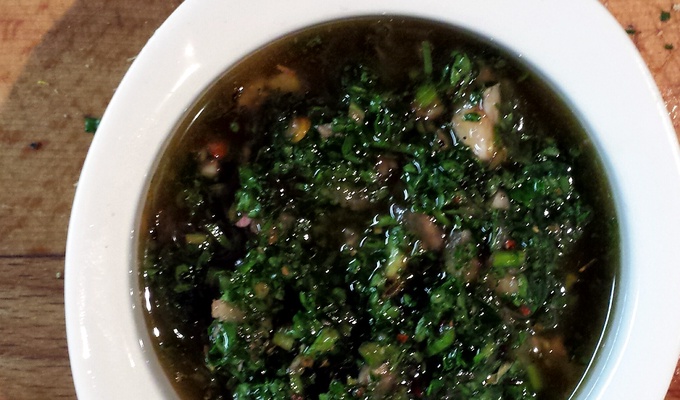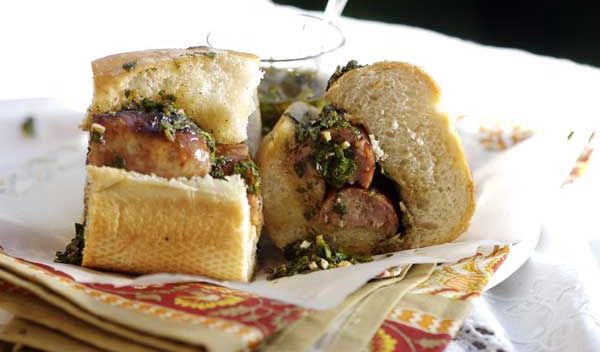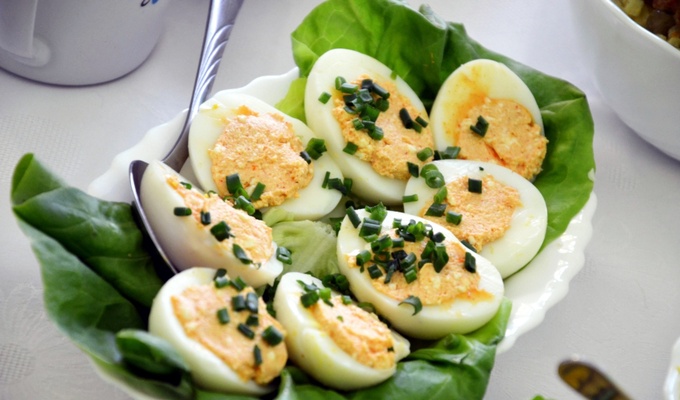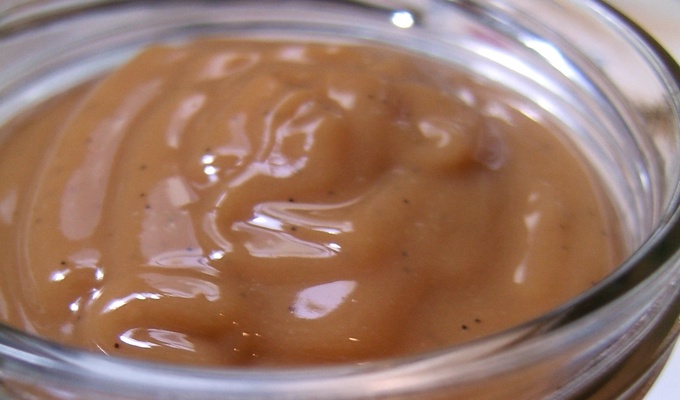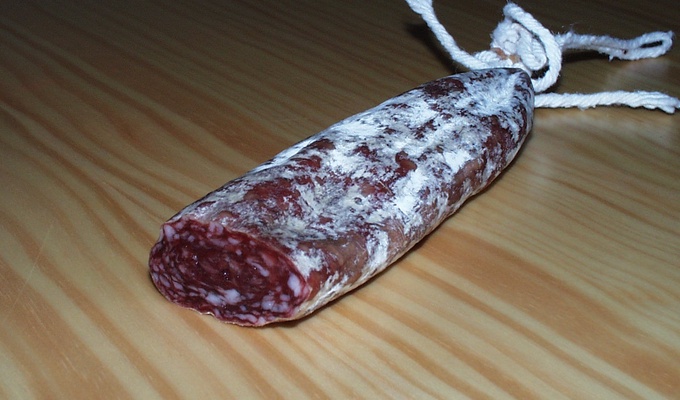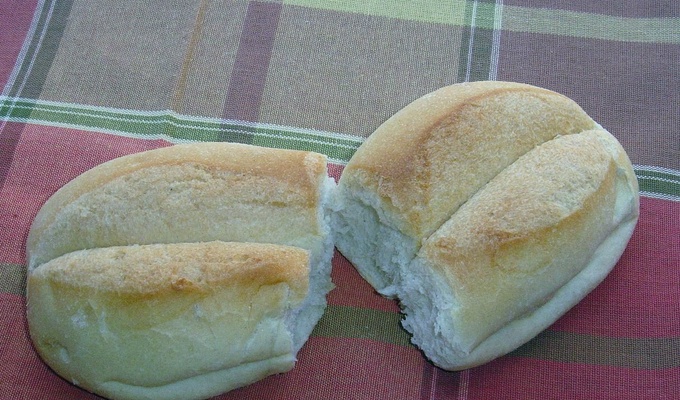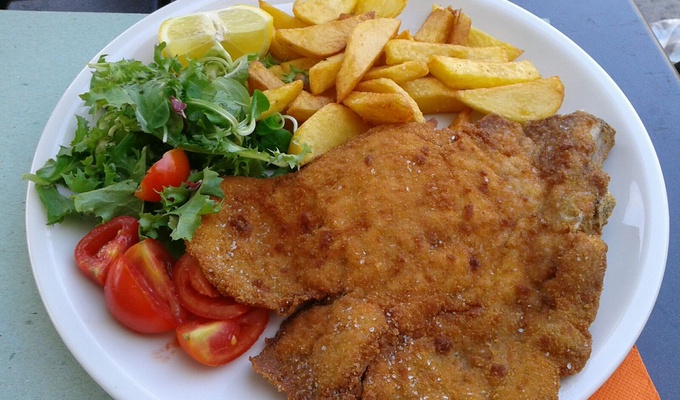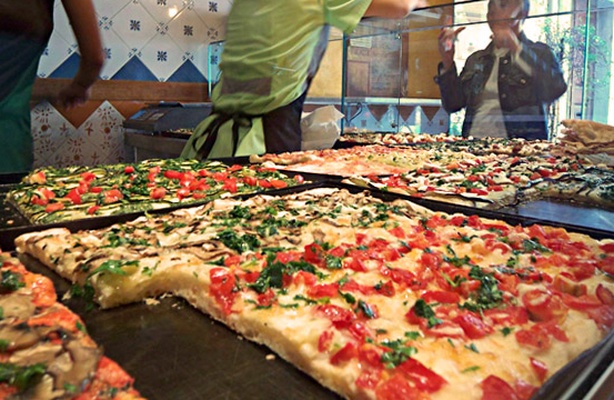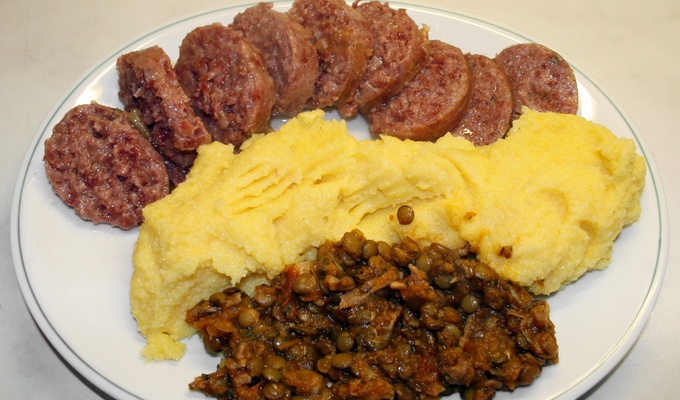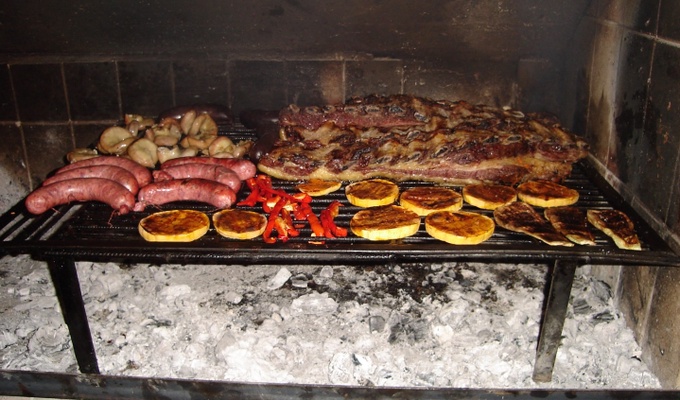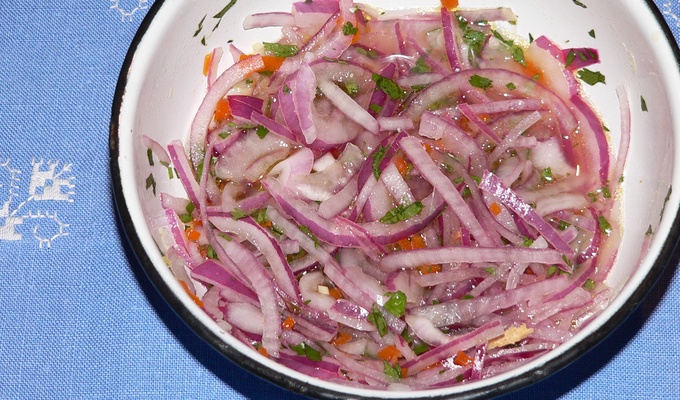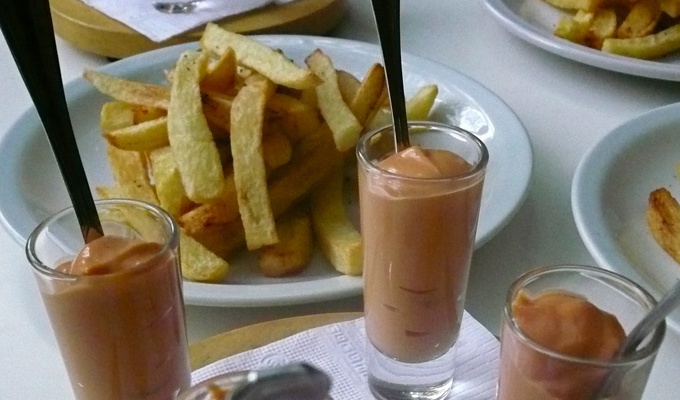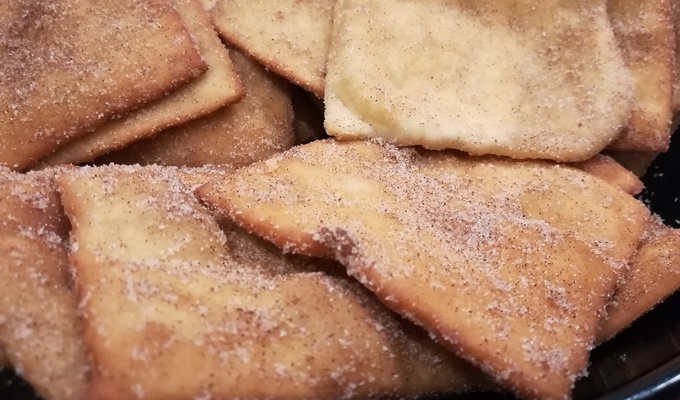Uruguayan cuisine is a fusion of cuisines from several European countries, especially of Mediterranean foods from Spain, Italy, Portugal and France. Other influences on the cuisine resulted from immigration from countries such as Germany and Scotland. Indigenous foodways were largely supplanted by immigrant traditions during the 19th and 20th centuries.
Spanish influences are very abundant: desserts like churros, flan, ensaimadas, and alfajores were all brought from Spain. There are also all kinds of stews known as guisos or estofados, arroces, and fabada . All of the guisos and traditional pucheros are also of Spanish origin.
Uruguayan preparations of fish, such as dried salt cod, calamari, and octopus, originate from the Basque and Galician regions, and also Portugal. Due to its strong Italian tradition, all of the famous Italian pasta dishes are present in Uruguay including ravioli, lasagne, tortellini, fettuccine, and the traditional gnocchi. Although the pasta can be served with many sauces, there is one special sauce that was created by Uruguayans. Caruso sauce is a pasta sauce made from double cream, meat, onions, ham and mushrooms. It is very popular with sorrentinos and agnolotti.
Additionally, there is Germanic influence in Uruguayan cuisine as well, particularly in sweet dishes. The pastries known as bizcochos are Germanic in origin: croissants, known as medialunas, are the most popular of these, and can be found in two varieties: butter- and lard-based. Also German in origin are the Berlinese known as bolas de fraile, and the rolls called piononos. The facturas were re-christened with local names given the difficult German phonology, and usually Uruguayanized by the addition of a dulce de leche filling. Even dishes like chucrut have also made it into mainstream Uruguayan dishes.
The base of the country's diet is meat and animal products: primarily beef but also chicken, lamb, pig and sometimes fish. The preferred cooking methods for meats and vegetables are still boiling and roasting, although modernization has popularized frying (see milanesas and chivitos). Meanwhile, wheat and fruit are generally served fried (torta frita and pasteles), comfited (rapadura and ticholos de banana), and sometimes baked (rosca de chicharrones), a new modern style. Bushmeat comes from mulitas and carpinchos. Regional fruits like butia and pitanga are commonly used for flavoring caña, along with quinotos and nísperos.
Mate is the national drink. The dried leaves and twigs of the yerba mate plant (Ilex paraguariensis) are placed in a small cup. Hot water is then poured into a gourd just below the boiling point, to avoid burning the herb and spoiling the flavor. The drink is sipped through a metal or reed straw, known as a bombilla.
Wine is also a popular drink. Other spirits consumed in Uruguay are caña, grappa, lemon-infused grappa, and grappamiel (a grappa-honey liquor). Grappamiel is very popular in rural areas, and is often consumed in the cold autumn and winter mornings to warm up the body.
Popular sweets are membrillo (quince jam) and dulce de leche, which is made from caramelized milk. Dulce de leche, is used to fill cookies, cakes, pancakes, milhojas, and alfajores. The alfajores are shortbread cookies sandwiched together with dulce de leche or a fruit paste. Dulce de leche is used also in flan con dulce de leche.
Pizza (locally pronounced pisa or pitsa) has been wholly included in Uruguayan cuisine, and in its Uruguayan form more closely resembles an Italian calzone than it does its Italian ancestor. Typical Uruguayan pizzas include pizza rellena (stuffed pizza), pizza por metro (pizza by the meter), and pizza a la parrilla (grilled pizza). Fugaza, a pizza-like dish made with focaccia-style bread, is also popular.
Sliced pizza is often served along with fainá, made with chickpea flour and baked like pizza. For example, it is common for pasta to be eaten with white bread ("French bread"), which is unusual in Italy. This can be explained by the low cost of bread, and that Uruguayan pasta tends to come together with a large amount of tuco sauce, and accompanied by estofado (stew). Less commonly, pastas are eaten with a sauce of pesto, a green sauce made with basil, or salsa blanca (Béchamel sauce). During the 20th century, people in pizzerias in Montevideo commonly ordered a "combo" of moscato, which is a large glass of a sweet wine called (muscat), plus two stacked pieces (the lower one being pizza and the upper one fainá). Despite both pizza and faina being Italian in origin, they are never served together in Italy.
Polenta comes from Northern Italy and is very common throughout Uruguay. Unlike Italy, this cornmeal is eaten as a main dish, with tuco (meat sauce) and melted cheese and or ham.
